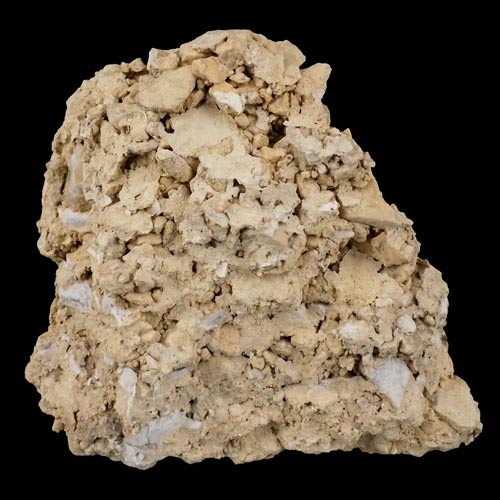breccia

Breccia is a coarse sedimentary or igneous rock composed of angular fragments (clasts) of older rocks that are cemented together in a fine matrix. Sources of breccias include scree slopes (taluses), faulting, volcanic eruptions, and meteorite impacts.
Fault breccia consists of angular material resulting from the shattering of the rocks on either side of a fault.
Crush breccia, which is often cemented, is produced as a result of the crushing and shearing stresses during folding or faulting.
Volcanic breccias can be grouped in three main categories based on the process of fragmentation: autoclastic, pyroclastic, and epiclastic. Autoclastic volcanic breccias result from internal processes that act during the movement of semisolid or solid lava; they include flow breccia and intrusion breccia. Pyroclastic breccia is produced by volcanic explosion and includes vulcanian breccia, pyroclastic flow breccia, and hydrovolcanic breccia. Epiclastic volcanic breccias result from transportation of loose volcanic material by epigene geomorphic agents, or by gravity, and include laharic breccia, water-laid volcanic breccia, and volcanic talus breccia. (Definition from "Classification of Volcanic Breccias" by Richard V. Fisher, GSA Bulletin, v. 71, no. 7, pp. 973-982 (July 1960)).


